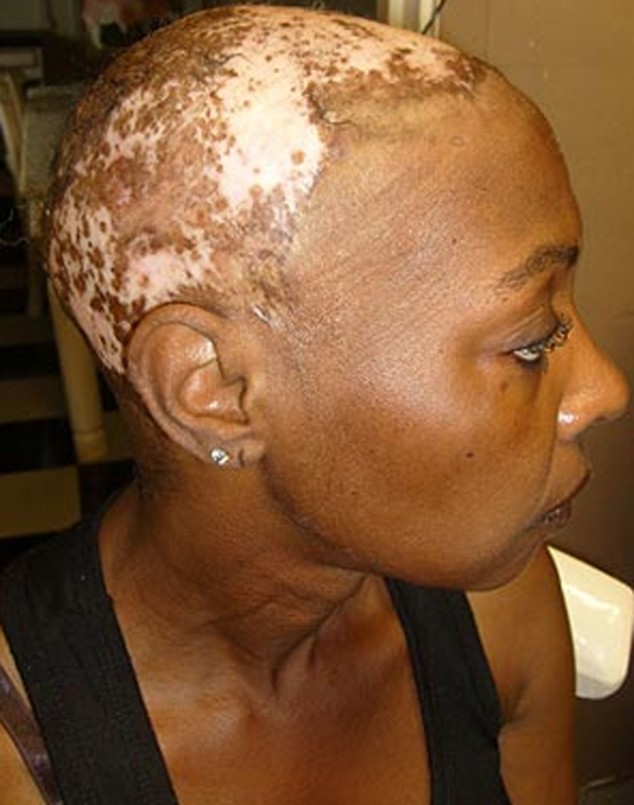
Study reveals that Black women who use chemical hair relaxers are at a higher risk of having fibroids!
The incidence of fibroids in the United States is 2-3 times higher in black women than white women, with their likelihood of developing the benign uterine tumors estimated at 80% and 70%, respectively. Researchers have spent several decades investigating this racial disparity, and they continue to seek answers, as the phenomenon has not yet been fully explained. However, certain epidemiological links have been established through the research, yielding information that could help reduce the incidence of this all-too-common condition among black women – provided they are aware of it. Hair relaxers are an example.
In the late ‘90s and early 2000s, researchers investigating the racial bias of uterine fibroids hypothesized that endocrine-disrupting chemicals in hair relaxers could impact a woman’s risk of developing the condition. They found evidence to support this hypothesis in surveys amassed by a large-scale U.S. cohort study, The Black Women’s Health Study. The surveys, collected from 59,000 premenopausal African-American participants, asked questions about the use of chemical hair straighteners, including: age of first use, frequency of use, number of scalp burns experienced, and type of formula(s) used.
Of the women surveyed in The Black Women’s Health Study, 94% reported having used hair relaxers for at least 1 year. Of all the participants, researchers observed that women who used hair relaxers were 1.17 times more likely to have uterine fibroids than those who did not use hair relaxers. Almost a third of the women who reported using hair relaxers did so on a frequent basis, at a rate of 7 or more times per year. With this group, the incidence of fibroids increased to 1.23 times that of women who do not use hair relaxers. Research determined that the womens’ age at first hair relaxer treatment and the type of relaxer they used (lye vs. no-lye) did not impact the incidence of fibroids; however, both duration of hair relaxer use and the number of burns experienced were positively correlated with the occurrence of fibroids.
Hair relaxers contain a variety of toxic chemicals: lye-based relaxers contain sodium hydroxide; “no-lye” relaxers contain calcium hydroxide and guanidine carbonate; “thio” relaxers contain thioglycolic acid salts; and almost all varieties contain endocrine-disrupting phthalates, which often appear on a label as “fragrance” or “perfume”. All types – including the “no-lye” relaxers – have been known to cause burns and lesions on the scalp (despite advertising claims to the contrary), and such injury facilitates the entry of the chemicals into the body.
Phthalates, a group of hormonally-active compounds, can be absorbed topically (through the skin) or through inhalation. Studies have shown that certain phthalates have an estrogenic effect on cells. Fibroid tumors are estrogen-dependent, so chemicals like phthalates that disrupt the body’s natural estrogen production can potentially spur the development of fibroids.

Since cosmetic products are not subject to regulation by the Food and Drug Administration, manufacturers are not required to disclose all of a product’s ingredients on the label. Thus, while endocrine-disrupting chemicals like phthalates are ubiquitous in cosmetic products, their presence may not be readily evident. There are, however, certain indicators that point to the presence of phthalates. In a 2011 study, the research team of Wise et al. noted:
Because the vast majority of hair relaxers list ‘fragrance’ as an ingredient, and 100% of popular fragrances tested in a 2002 study were found to contain phthalates, most hair relaxers likely contain these chemicals. In addition, some hair relaxer products directly list phthalates as one of their chemical ingredients. (Wise et al. 2012)
Of course, phthalates are not the only endocrine-disrupting substance that black women – or consumers, in general – encounter on the day-to-day: chemicals known for their reproductive toxicity appear in products all around us, and without knowledge of their presence, consumers will continue to be subjected to the detrimental effects of those chemicals.
That said, the link between hair relaxers and increased fibroid risk is a significant discovery, both because it could partially explain the racial bias of uterine fibroids and because it serves as actionable information that enables women to moderate their exposure to the toxins that could contribute to the growth of fibroids. With this knowledge, women can make an informed decision about whether the potential cost of hair straightening treatments simply outweighs the beauty benefits.








